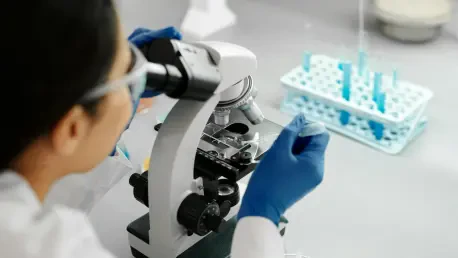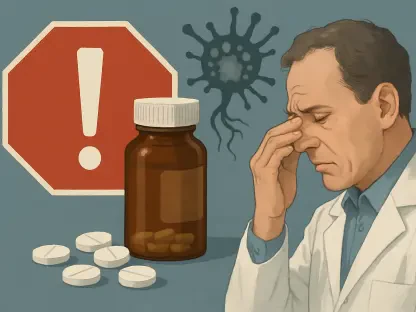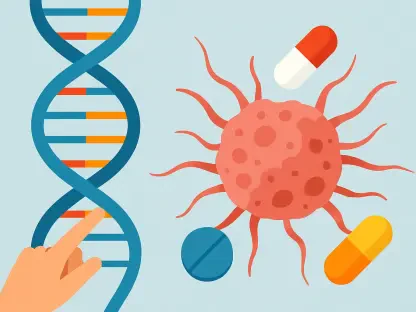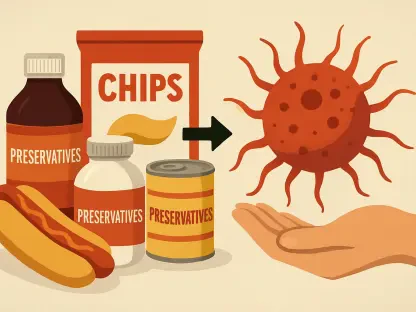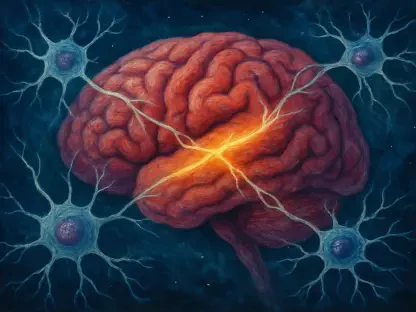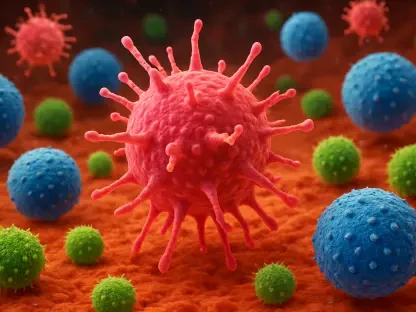Neutral Lipid Storage Disease with Myopathy (NLSDM) represents one of the intriguing frontiers of genetic and medical research. This rare disorder offers a novel perspective on how genetic mutations can shape phenotypic manifestations and lead to significant metabolic and muscular complications. The disease is most notably characterized by the unusual deposition of lipids within tissues, which prominently affects muscle function. As scientific understanding of NLSDM progresses, one aspect continues to command attention—whether researchers have yet to fully unravel the extent of genetic diversity within this condition. Inquiries into the implications, clinical presentations, and genetic underpinnings have highlighted complexities that spur further investigation.
Insights Into NLSDM Study
Exploring the Clinical-Genetic Interactions
The delineation between genetics and phenotype in NLSDM is still being understood, and valid scientific inquiries have sought to deepen understanding by analyzing varied clinical presentations and underlying genetics. For instance, a focused study from a Chinese neuromuscular center recruiting eight individuals with NLSDM has opened new avenues in understanding this interplay. Offering pivotal insights, this analysis identified two new PNPLA2 gene mutations, thereby extending the known genetic map associated with this disorder. The recruitment span included wide age variations and mostly involved females, enhancing the breadth of demographic data tied to the disease.
The focus on clinical presentation also allowed for a deeper dive into how these genetic changes translate into tangible symptoms. Recorded symptoms highlighted right upper extremity muscle weakness as a commonality among patients, while also documenting unprecedented instances such as facial muscle involvement. This extends previously limited understanding of NLSDM’s phenotypic range, pointing to novel pathological influences of these genetic mutations. Cases varied considerably regarding muscle atrophy patterns, with some revealing mixed limb muscle atrophy, underlining the ongoing need to unravel the genotype-phenotype relationship.
Biochemical and Genetic Revelations
Despite the challenges in linking specific genetic mutations to distinct symptoms, biochemical and pathological evaluations provide important pieces to this puzzle. Uniformly elevated serum creatine kinase levels were observed across all studied patients, which directly connects with lipid droplet aggregation found in muscle fibers during pathological exams. The variety in observed fiber sizes, vacuolization, and lysosomal activities further emphasizes the biochemical disruptions attributable to PNPLA2 gene mutations. Pathological findings thus play a crucial role in characterizing this disease’s progression and manifestations.
The genetic analyses continued to shed light on the heterogeneity and nuances of PNPLA2 mutations. The identification of novel mutations, including a nonsense mutation and an exon deletion, deepens the intricate understanding of mutational impacts on disease pathology. Moreover, consistently recurring mutations underscore potential regional or demographic trends, suggesting that NLSDM may present differently across ethnicities or regions. The identification, particularly of the recurring mutation c.757 + 1G > T in this cohort, hints at potential genetic predispositions inherent to Chinese NLSDM patients.
Implications for Future Research
A Continuing Quest to Understand Genetic Diversity
As researchers probe deeper, it grows increasingly evident that NLSDM exemplifies the ebbs and flows of genetic diversity’s role in rare disorders. Recognizing the influence of myriad genetic mutations on disease presentation fuels more focused research into underlying mechanisms. The revelations from existing studies spark dialogues about the need for broader genetic screenings and collaborations to detect uncharted mutations while considering other severity-modifying factors.
Although direct genotype-phenotype correlations remain elusive, the unearthing of novel mutations offers insight into understanding each mutation’s biological pathways. Through continued research, there remains potential for innovative therapeutic strategies to emerge that address these specific pathways, elevating diagnostic accuracy and personalizing medical interventions for NLSDM individuals. The inclusion of diverse ethnic groups in future studies will broaden insights, with known PNPLA2 mutations composing only one part of a continually evolving genetic landscape.
Recognizing Complexity for Comprehensive Strategies
The complexities underpinning NLSDM demand comprehensive strategies that incorporate diverse genetic, clinical, and biochemical insights. Accumulated research fortifies the search toward deciphering the roles played by each factor in disease development and presentation. Such initiatives encourage further exploration into the potential interactions between novel mutations and phenotypic outcomes that emerge from conditions like NLSDM.
Moreover, the need for refining the tools and methodologies used in this research remains a priority. Genetic sequencing technologies have propelled the discovery of nuanced mutations—emphasizing the potential for cross-disciplinary collaborations. Efforts must continue into the realm of multi-modal diagnostic pathways capable of embracing NLSDM’s full spectrum. It is through recognizing the disease’s inherent variability that researchers can construct meaningful, innovative frameworks for advancing patient care and effective treatments.
Charting an Informed Future
Future Considerations in NLSDM Research
Recognizing genetic diversity’s role in shaping NLSDM provides a robust horizon for the development of innovative therapies and improved diagnostic processes. As researchers gain understanding of the newly identified mutations and their implications, the exploration of specific genotype-phenotype relationships continues to evolve. This has underscored the importance of recognizing the complex interplay between genetic mutations and environmental or epigenetic factors that could influence the disease’s trajectory.
The path ahead involves leveraging emerging technologies and methodologies to further elucidate NLSDM’s intricacies. Future considerations should include widening the scope of genetic research to understand broader population-level patterns and encouraging diagnostic advancements that cater to these insights. A comprehensive approach promises to bring more clarity to the multifaceted reality presented by NLSDM, potentially transforming clinical practices and enhancing patient outcomes.
A Call for Integrated Strategies and Collaborative Discoveries
Neutral Lipid Storage Disease with Myopathy (NLSDM) presents an intriguing challenge at the intersection of genetic and medical research. This rare disorder provides a unique perspective on how genetic mutations manifest in phenotypes, leading to complex metabolic and muscular complications. NLSDM is primarily marked by unusual lipid accumulation within tissues, significantly impacting muscle function and overall health. As scientists advance their understanding of this condition, a persistent question remains—have they thoroughly explored the genetic diversity inherent to this disease? The exploration into NLSDM’s implications, clinical presentations, and genetic foundations has revealed intricate details that continue to spur scientific curiosity and investigation.
Researchers are delving into the varied clinical manifestations that range from muscle weakness to muscular pain, with the severity differing from one individual to another. These symptoms, combined with lipid irregularities, make diagnosing and treating NLSDM particularly challenging. Furthermore, the genetic basis of NLSDM is complex, with investigations unveiling multiple mutations responsible for the disease. This genetic diversity underscores the importance of personalized approaches in addressing this condition. Thus, NLSDM remains a vibrant area of research, reflecting the broader efforts of modern science to understand genetic diseases and improve patient outcomes through targeted therapies.
